I try to write my posts as unbiased as possible and recommend the products I consider to be useful and the best. I use affiliate links, this means that–at no extra cost to you–I can make a commission on a purchase you make after clicking on them. As an Amazon Associate I earn from qualifying purchases.
Training Your Dog To Stand
Training your dog to stand is an easy and often helpful obedience command to teach your canine friend. You can use luring to teach this to your dog and use it as and added command to practice stimulus control.
The obedience command stand can be used in several ways: use it to ask your dog to get up from the couch or other place, use it at the vet's office for a check up or procedure, use it when bathing and grooming your furry friend.
Stand is a good command to mix with sit and down and prevent your dog from guessing which command is coming next, this helps you teach him to pay attention to what you are asking instead of guessing.
This is a very detailed guide for training your dog to stand, the idea is for you to understand that even though dogs can learn something quickly, it takes time and practice for it to become reliable.
Training your dog to stand tips to remember!
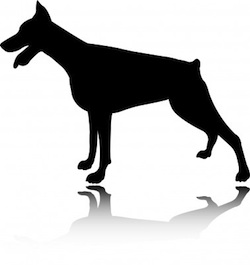
- If you haven't done so yet I strongly suggest you start by reading the following articles, then come back here: 1) Marker Word, the first thing you should teach your dog, 2) How to get a reliable dog command, 3) Training your dog to sit, 4) Training your dog to lay down.
- You do not have to train your puppy all the way to step 12. If you are happy at step 7-8 you can stop there!
- Even though I tell you to repeat steps 1-7 every time you add something new, if your pet is "getting it" you can skip some steps. But DO NOT be afraid to go back down a level if your hound needs it!
- Even though I organized Steps 7-12 in a logical order, you can mix them up whenever you are ready or to change things around and make training sessions fun! But know that when combining two difficulties together (for example: duration and a new place), your pet's response might be worse in the beginning. Your dog will get better with...Practice practice practice!
- To keep training sessions fun use food treats, toys, games, petting and anything else your puppy enjoys as rewards.
- You do not have to set specific training sessions. You can train your canine friend at any time! Use his/her regular feeding food to get a few trials of practice before you put the food bowl down. Ask him to do something before you throw a ball for him/her.
12 Steps for Training Your Dog To Stand
Step 1: Get the behavior stand going
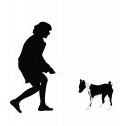
When you start training your dog to stand, you will not be saying the verbal command. This will come in step 6, if you do it now, when your pet doesn't know the meaning, you might make the command weaker.
Reward your puppy for every singly good response. We will cut down on the use of treats gradually in later steps, when your pet is ready.
Training your dog to stand with Luring:
Have your dog sitting down. Show him the treat in your hand, but don't let him get it! Move the treat away from him, parallel to the ground. Your canine friend will probably break his sit to follow your hand. Mark and Reward!
If he is not motivated by treats, try prompting him with your voice and body movements. As soon as he stands...Mark and Reward!
Repeat a few times (5-8) until your dog is eagerly standing for your lure. Try it starting with your dog laying down as well. Then move on to Step 2.
Training your dog to stand with Capturing:
Have treats near you and watch your pooch. When he stands up on his own from a sit or down position...Mark and Reward!
Repeat many times. Eventually your pet will start standing up more often around you because he has learned that this earns him a treat. When this happens move to step 2.
Step 2: Get rid of the food lure
If you have been using a treat lure while training your dog to stand up, put the treat on your other hand. Lure your pooch with and empty hand. When he stands Mark and Reward! (use the treat hidden in your other hand to reward).
You might need to wait a few seconds for your pet to respond to your empty hand movement. Be patient, count to 10 in your head before you ask again.
Now do a regular (step 1) food lure, then 2 empty hand lures, then 2 food lures, then 3 empty hand lures...etc. The idea is to slowly make your empty hand lures more and more often (pretty fast) until you are only doing an empty hand food lure all the time!
You are ready to move to Step 3 when your dog responds correctly 8 out 10 times you ask him to stand with an empty hand lure.
Step 3: Cut back on treats
Part of training your canine friend to stand is to let him know that sometimes there are no food rewards. But always praise your pet verbally!
Start giving treats only 9 times out of 10 times he responds correctly to the empty hand lure. Then 8 out 10....then 7 out 10. This has to be done randomly so your hound can't guess when he will get a treat and when he will not. You don't have to count 10 times to know how many treats to give your dog, do an estimate. The idea is that he still needs to be rewarded with a food treat 70% of the time. A little more or a little less won't affect things, just make sure it is random!
Move on to Step 4 when you are rewarding only 70% of good responses.
Step 4: Introduce a hand signal
If you have been Luring Stand, adding a hand signal should be very easy.
The hand signal for stand resembles the actual luring movement. If you are standing in front of your pooch, move your extended arm, palm facing out from your hip towards your back and up. Like a quarter of a circle movement with your arm.
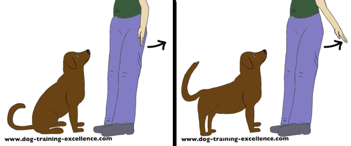
Training your dog to stand with Luring:
To teach your pet what this means introduce this movement after a few empty hand lures. Wait for him to respond! It might take him a little bit of time, be patient. When he finally stands....Mark and Reward!
From now on you will only reward your dog standing after your hand signal. And you will reward him 100% of the time again! Because we are adding a new difficulty we need to make sure he understands what is going on. Reward every single good response! Note that you will NOT be giving your pet treats if he sits for the empty hand lure...only for the full hand signal!
You are ready to move on to Step 5 when your dog responds to your hand signal 8 out of 10 times (or 4 out of 5).
Training your dog to stand with Capturing:
If you were training Stand with Capturing, you can introduce the hand signal as follows. Do the hand signal and wait for your dog to stand. Wait....be patient...when he does....Mark and Reward! Now you will only reward him every single time he stands up after your hand signal. If he does it without your hand signal, simply ignore it.
Your hand signal now acts as a "green light" for your pet to do the behavior and get a treat for it!
You are ready to move on to Step 5 when your dog responds to your hand signal 8 out of 10 times (or 4 out of 5).
Step 5: Cut back on treats...again!
Do the same you did in Step 3!
Use this time to perfect the standing behavior: use food rewards when your hound responds particularly good, or fast (within 2 seconds of your command), etc.
You are ready to move on to the next step when your dog responds 8 out of 10 times and is only rewarded 70% of good responses.
Step 6: Introduce a verbal command
Because your dog already knows to respond to a hand signal, adding a verbal command should be easy.
First, say your command "stand".
Immediatly after (almost as you finished saying the word) do the hand signal.
Mark and Reward your pet's response.
Repeat this many times for a couple of days.
Now do the same, but make the hand signal less obvious. Make the gesture smaller. If your dog responds Mark and Reward! Otherwise, wait...be patient.
At some point do not make the hand signal at all. Say the command and wait for your furry friend to respond, then Mark and Reward! (Reward 100% of good responses to your verbal command only! Mix in some hand signals but these should only be rewarded 50% of the time)
You are ready to move on to Step 7 when your dog responds to your verbal command 8 out 10 times you ask.
Step 7: Cut back on treats....again!
Yes! time to cut back on treats. Repeat what you did on Step 3 and use the rewards to perfect the behavior!
At this point you want to cut back treats to 50% of the time, make it random!
Do you have to use treats forever?
Well, do you get a paycheck every month? This is something similar. If you want your pet to reliably respond to your commands you need to keep rewarding them, but since you will be doing it only half of the time and randomly, he will ALSO respond when you do not have treats!
You are ready to move on to step 7 When your dog responds 8 out 10 times to both hand signals or verbal commands and is being rewarded 50-60% of the time.
Note: at this point you can start training another behavior at the same time.
Step 8: Training your dog to stand in many different places

Because dogs are bad at generalizing a concept, we need to specifically teach them that "Stand means stand everywhere!".
Repeat Steps 1-7 in many different place. Start with easy ones and move on to harder ones. Your dog MUST succeed every single difficulty before moving on to the next one.
Even though I am telling you to repeat steps 1-7, your canine friend will start learning faster with each new place. In which case you can probably skip steps 1-3 at some point. You will know when he is ready to skip some steps!
Step 9: Training your dog to stand with distractions
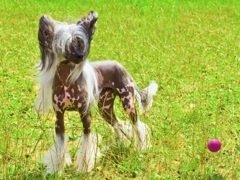
Because dogs are bad at generalizing a concept, we need to specifically teach them that "Stand means stand no matter what happens around them!".
Repeat Steps 1-7 with different distractions. Start with easy ones and move on to harder ones. Your dog MUST succeed every single difficulty before moving on to the next one.
Examples are:
- Inside your house with another person bouncing a ball near by.
- Inside your house with kids running around.
- Inside your house with loud noises (pan dropping to the floor).
- While on a walk when a dog is walking on the other side of the street.
- Etc.
Step 10: Training your dog to stand adding duration (Stay)
Because dogs are bad at generalizing a concept, we need to specifically teach them that "Stand means stand until I say so!".
Repeat Steps 1-7 adding duration. Start with with short time periods (seconds) move on to longer ones slowly. Your dog MUST succeed every single difficulty before moving on to the next one.
Read the article "Teaching a dog to Stay" for more information.
Step 11: Training your dog to stand adding distance
Because dogs are bad at generalizing a concept, we need to specifically teach them that "Stand means stand no matter how far away you are!".
Repeat Steps 1-7 at different distances. Start with easy ones (1-2 steps away) and move on to harder ones. Your pet MUST succeed every single difficulty before moving on to the next one.
Step 12: Combine steps 8-11
For example: add distance while at the dog park or ask for a stay while you bounce a ball walking around your pooch.
Repeat Steps 4-7 for each combination. Start with easy ones and move on to harder ones. Your canine friend MUST succeed every single difficulty before moving on to the next one.
Your pet might do the behavior a little sloppily when you combine difficulties. Don't worry...Practice practice practice and he will get it perfect again really soon!
One last thing: Stimulus Discrimination!
When you teach your hound many different obedience commands he might start to get them mixed-up!
This is normal, but you need to pay attention and be consistent. Only reward him when he responds correctly, on the first try, to your specific command.
Your dog has good stimulus discrimination when he responds to a specific command 8 out 10 times, on the first try.
Home > Dog Training Commands > Training your Dog to Stand

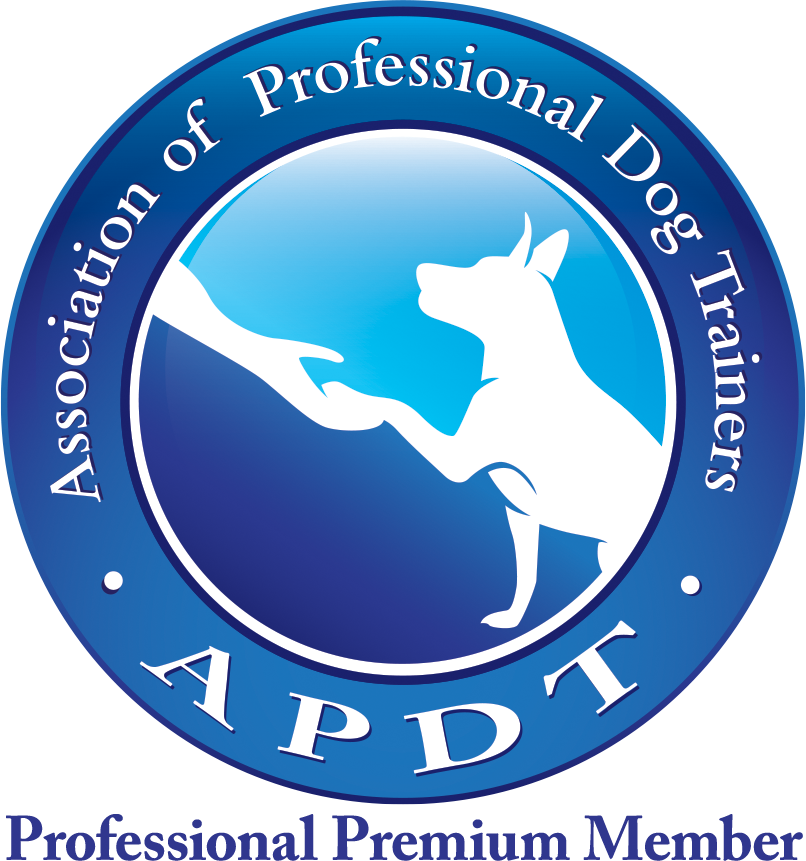


New! Comments
Questions? Anecdotes? Tips? Leave me a comment in the box below.